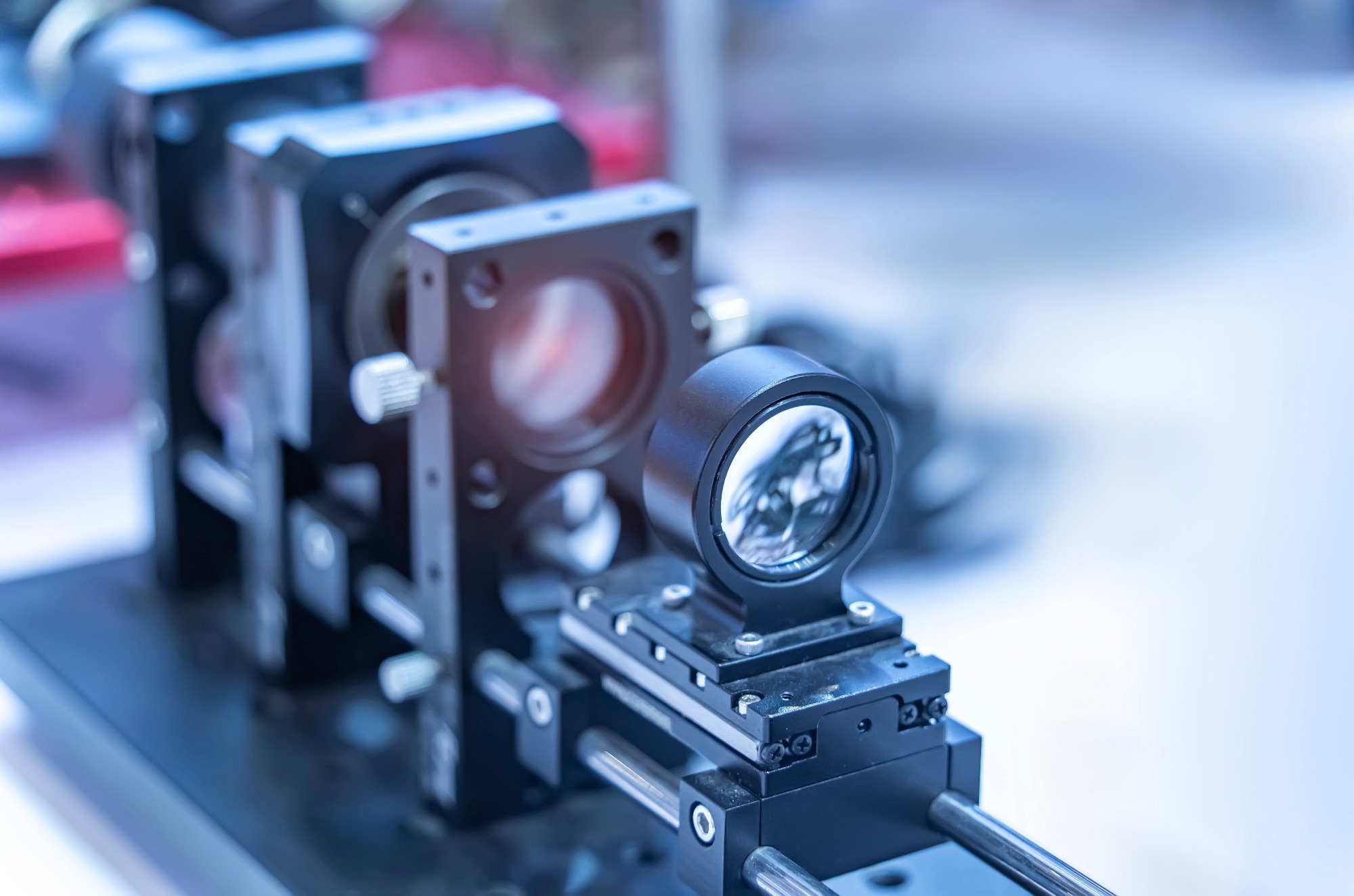A recent study published in Advanced Optical Materials presents a novel method for depositing and patterning plasmonic gold nanorods (AuNRs) onto solid surfaces, specifically glass, using a combination of optical manipulation and tailored chemical environments.

Image Credit: asharkyu/Shutterstock.com
Background
Precise control over nanoparticle positioning is central to advancing nanophotonic and sensing technologies. Various methods—chemical self-assembly, lithography, and field-driven techniques—have been developed to manipulate particles at the nano- and microscale. Among these, optical methods such as opto-thermophoresis have shown promise by using localized thermal gradients to guide particles into well-defined patterns with high spatial resolution.
However, applying opto-thermophoresis to anisotropic particles like AuNRs has proven difficult. In aqueous solutions, these nanorods are typically stabilized by surfactants like cetyltrimethylammonium chloride (CTAC), which hinder their ability to aggregate and form ordered assemblies. While previous work has demonstrated successful patterning of spherical gold nanoparticles, extending this to nanorods has remained a challenge due to differences in surface chemistry and geometry.
Study Overview
The experimental setup began with the synthesis of AuNRs using well-established colloidal chemistry techniques, allowing precise control over particle size and aspect ratio. The nanorods used in the study measured approximately 16 nm in diameter and 60 nm in length, yielding an aspect ratio of about 3.8.
At the core of the assembly process was a focused 532 nm laser beam, expanded and directed through a high-quality microscope. When focused onto the sample, the laser created a localized heat source that generated a thermal gradient within the colloidal solution. The AuNRs, suspended in aqueous mixtures containing varying concentrations of ethanol and polyvinylpyrrolidone (PVP) of different molecular weights, were deposited on thoroughly cleaned glass substrates.
The experiment was conducted under tightly controlled conditions. Laser power ranged from approximately 8.6 to 14 mW, ethanol concentrations varied up to 20% (v/v), and polymer concentrations were precisely tuned. Glass coverslips with molded wells provided confinement, ensuring the particles remained within the focal area during assembly and minimizing drift.
Ethanol played a key role by altering the colloidal stability of the dispersion. Specifically, it influenced micelle formation by the primary surfactant, CTAC, and modified the interfacial interactions between nanorods. The presence of ethanol reduced surfactant coverage on the AuNR surfaces, increasing their mobility under the influence of the thermal gradient and enabling more effective particle assembly.
To analyze the results, the researchers employed scanning electron microscopy (SEM) to visualize the resulting nanostructures and surface-enhanced Raman spectroscopy (SERS) to assess the electromagnetic enhancement created by densely packed plasmonic regions. Additional optical characterization using UV-Vis spectroscopy provided insights into how ethanol content and polymer size affected both the structural integrity and optical properties of the assembled nanorods.
Results and Discussion
The study revealed that in purely aqueous environments, AuNRs failed to assemble under laser-induced thermal gradients, largely due to dense surfactant layers that prevented interparticle attraction. The introduction of ethanol, however, dramatically changed the system’s behavior.
Ethanol raised the critical micelle concentration (CMC) of CTAC—from roughly 1.1 mM in water to about 125 mM in water-ethanol mixtures—weakening the surfactant’s hold on the nanorods and allowing them to respond more readily to thermophoretic forces.
As ethanol content increased, the assembly quality improved noticeably. Patterns became more defined, with higher growth rates and greater anisotropy. Polymer characteristics further influenced the assembly. Higher molecular weight PVP, especially PVP360K, promoted ordered, densely packed arrangements, particularly in the pattern’s central region. This was likely due to depletion interactions described by the Asakura–Oosawa (A–O) model, which favors side-by-side and tip-to-tip aggregation of nanorods.
Laser power also played a role. While higher intensities accelerated assembly, excessive power sometimes reduced pattern uniformity, highlighting the need for careful tuning of optical input.
SERS measurements showed significant electromagnetic field enhancements, with enhancement factors reaching up to 108. These enhancements correlated with the degree of structural order in the AuNR assemblies. SEM images confirmed the formation of organized patterns aligned with the laser’s focal zone, with assembly quality improving alongside ethanol concentration and polymer molecular weight.
Conclusion
This research successfully demonstrates a fast, scalable, and surface-functionalization-free method for assembling gold nanorods into ordered structures using opto-thermophoresis enhanced by ethanol as a co-solvent. The technique enables rapid (<10 seconds) formation of dense plasmonic patterns with tunable morphology and strong SERS responses.
Key parameters—ethanol content, polymer size, and laser power—were shown to influence surfactant behavior, colloidal stability, and assembly dynamics. By harnessing the interplay between chemical formulation and optical manipulation, the study opens new possibilities for developing nanostructured materials for chemical sensing, biosensing, and nanophotonic device applications.
Download your PDF copy now!
Journal Reference
Jiménez Amaya, A., et al. (2025). Co‐Solvent‐Aided Opto‐Thermophoretic Printing of Gold Nanorod Assemblies. Advanced Optical Materials. DOI: 10.1002/adom.202500375, https://advanced.onlinelibrary.wiley.com/doi/10.1002/adom.202500375